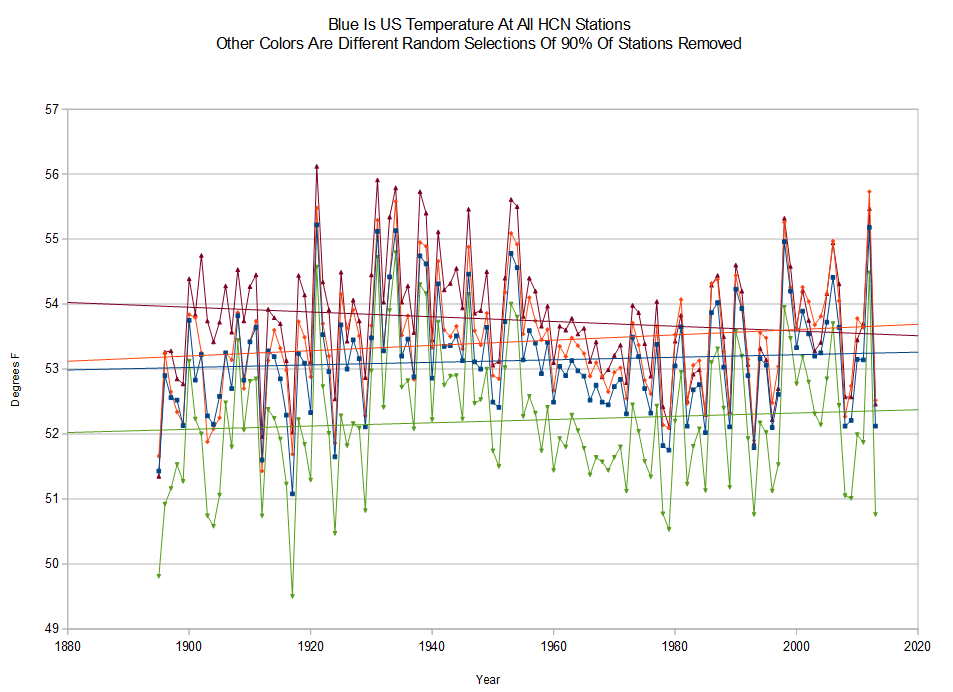I tried an experiment to randomly remove 90% of GHCN US stations three times, using different random seeds. One run produced cooling and others produced warming. Blue is the full data set.
The 90% removed leaves approximately 100 US stations, showing that amount isn’t enough for the US – much less the world.



“The 90% removed leaves approximately 100 US stations, showing that amount isn’t enough for the US – much less the world.”
Close enough for government work…
Good stuff. An excellent experiment and with very interesting results. it would be also interesting to seat exactly what percentage removal that we “lost” the trend.
Why not remove 100% of the stations and just make it up?
Sorry that’s what they are doing.
🙂
According to this finding, station removal can have a large impact, if done properly. 😉
http://www.uoguelph.ca/~rmckitri/research/nvst.html
Steve Mosher says 5 stations is dead-certain for the US trend, you denier you!
There does appear to be a relative warming trend out west, and a cooling to the south east.
It would probably make more sense to maintain a proportion of stations per state, or region.
Does GISS include any satellite data? I’m being told it incorporates satellite data. I think that’s BS. Can someone help me?
One station in the Southern Hemisphere was apparently important enough for climate scientists to make profound conclusions about their ciimate trends during the 1800’s.
Sharpen your pencil and get back to work, Steven. Even after severe tampering with the data set, the best you can show is 0.3F of warming per century? You’re clearly not qualified to work at NCDC or even be a science writer at the Associated Press.
The thing I liked to do was average the latitude (of those stations that had data), and
see the North-South movement. Of course, if the average latitude moves south, you should expect warming.